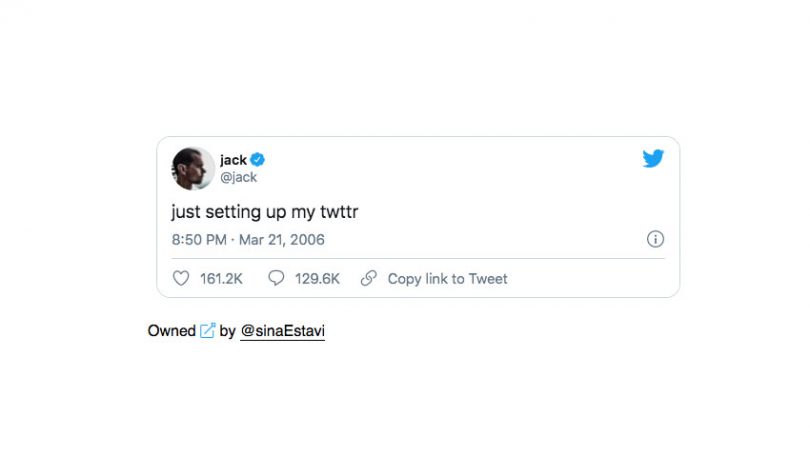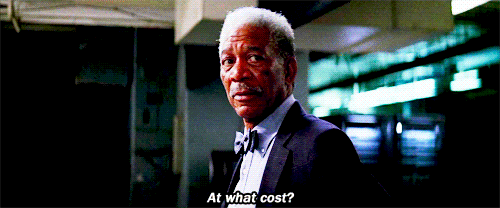People are welcoming NFTs as the latest trend in the world of crypto, however we actually had this technology even before the invention of advanced encryption algorithms. Of course, now this technology can be used more effectively and securely, and it might carry the potential to change a lot about the internet you know today. If you don’t have any idea what these new so welcomed additions to the crypto world are, you should.
A Non-Fungible Token
NFTs are actually quite simple. You’ve seen people buying art pieces for millions of dollars, you’ve seen people buy manuscripts of books for millions of dollars, and you’ve seen so many other valuables being bought and sold everyday for a lot of money. Imagine all that and put it online. There you go. NFTs.
A Non-fungible Token is a token. A token which represents ownership like a paperwork saying “You own this car”. Okay… owning is easy. We go buy so many things everyday from stores, why aren’t NFTs any different than amazon? That’s the non-fungible part. A fungible asset is what economists call an asset which can be exchanged without the loss of value. For example, money is a fungible asset and so is fresh bread. If I have a load of bread and I give it to you, you would probably exchange it comfortably with another loaf of bread. The same is true with money, a $100 bill is a $100 bill, we can exchange 2 similar notes and that won’t change the value of the note. And then there are non-fungible things, assets which do lose value when exchanged. You wouldn’t give me the one signed copy of a book which you had for almost all of your life for the same book, right? Even if I give you the same book, or even a signed copy of the same book; the value of the two items is different. They are non-fungible, assets which cannot be just exchanged. The painting Mona Lisa for a “painting” of the Mona Lisa? Nope.
And boy do we love collecting stuff. Who hadn’t the special pack of Pokémon cards as kids? Who wouldn’t want a signed album or a signed ball? Humans love the ownership of limited-edition stuff. There are people who bid on things for millions. It’s nothing new. NFTs are just a new look at this world we’ve always had. Remember the digital painting you made? Or the song you recorded? Or literally the tweet you tweeted? That ALL can be sold through NFTs. What? How? The internet today is a mess. We all know that and NFTs won’t really clear up this mess (if anything, make it even more messy) but in between this mess, artists feel betrayed. A digital painting can be just shared by passing a JPEG/PNG. A recorded music single can be shared, just give me the MP3. A tweet can be… shared… retweet it? I don’t know. Fun fact: The first tweet ever on twitter just sold as a NFT for $2.9 million. $2.9 million. Here’s the tweet.

So if I can show you this tweet, people can retweet it and people can share the JPEG or the MP3, then why NFTs? Why spend millions for something so publicly available? Well, yeah but haven’t you seen people on Instagram posting with fancy captions like “Just framed my Starry Night”. If that person really has the Starry Night, they can share it just like that with anyone. However, their Starry Night is one or, as the economist would say, scarce. The painting is YOURS (if you’ve bought it) and you can share it but it’ll stay yours until you sell it. That’s exactly what a NFT would be like. Have it. Share it. The ownership is yours forever. You’ll always get to brag about your 2.9-million-dollar tweet.
Definitively, NFTs are Non-Fungible Tokens which you can buy to prove your ownership for an asset which is proven to exist in a scarce amount. Seems too simple to exist… there’s another side to it. The complicated side.
The Complicated Side: Blockchains
NFTs seem simple enough but how do they prove your ownership; how do they keep that ownership secure and how does all the crypto transactions work? The answer’s blockchains. Blockchains are networks of literal chains of literal blocks. Blocks are a pack of data used for storing crypto information. They are connected in chains to each other and they provide a really strong method of encryption to make sure no one can just alter your crypto transactions. Not only crypto transactions but also, they can help in keeping records, maintain a notary or hospital records.
The first proper use of blockchains was in bitcoins. A block contains 3 things: the actual data, the hash of the block and the hash of the previous block in the chain (the first block in the chain has ‘0000’ as the hash for the previous block). The data can differ from blockchain to blockchain. In the bitcoin blockchain, the sender’s address, the receiver’s address and the amount of bitcoin are stored in the data section of the block. These are quite self-explanatory for a bitcoin transaction. The other 2 contents of a block are essential in keeping the block safe. A hash is a security string of characters which are uniquely different for all the blocks (IN THE WORLD). A hash is created by very complex mathematical operations. One of the algorithms for creating hashes is SHA-256. Each hash is like a fingerprint; unique. It identifies the block itself but it also identifies the sender, the receiver and the number of coins transferred. THIS basically means that if a hacker alters anything on the block, the hash changes. When the hacker even tries to do this, the chain breaks. As mentioned, the block also contains the hash of the previous block. So, Hacker changes contents > Hash changed > Previous Hash of the next block does not match up with the previous block > Chain breaks. So, if the chain breaks, wouldn’t it be disastrous for the whole blockchain?
Nope. Here comes P2P or peer-to-peer system. Every peer or user in the blockchain has a copy of the block chain. Everyone gets a copy! If everyone has an identical copy, they can check each other’s copies and verify them. Generally, for a transaction to be altered on a blockchain, you’ll need to change more than 50% of ALL the blockchains for the transaction, for if more than 50% of the people agree that this blockchain is correct, then the block chain is correct! So, respected hacker sir/madam, you need to first change the block carrying the transaction you want to alter and then change all the blocks which follow and THEN do the same for more 50% blocks on the blockchain. Cool? Got it?
The way these blocks are created add another layer of security! Really, it’s that secure. However, I wouldn’t be covering it.
Okay this all looks quite perfect, innit?
Ah NFTs. They can bring back the reward for making art nowadays, they can bring back so much. Here are some examples of how you or your company might use a NFT:
- Make 50,000 tokens as tickets for a baseball game.
- Make one single token for your artwork/music or any creation.
- Give your existing tokens as collateral to get crypto loans.
- Buy a skin for your favourite game and actually OWN the skin and sell it when you’re done with the game.
And many more uses are coming up every day. Ethereum, a very popular blockchain, even claims that one day, you’ll be unlocking your car using your NFT for the car. And therefore, people are calling NFTs the next big thing after the creation of the internet. HOWEVER, you right now all this requires massive amounts of computing power and energy. This high energy uses goes into keeping all this secure. And this is the energy that causes climate issues. Ethereum claims to reduce this consumption by a 99.98% but that number is too huge to believe right now. With all the benefits to everything with NFTs, is it worth it? And as Lucius Fox from The Dark Knight would say “At What Cost?”.

